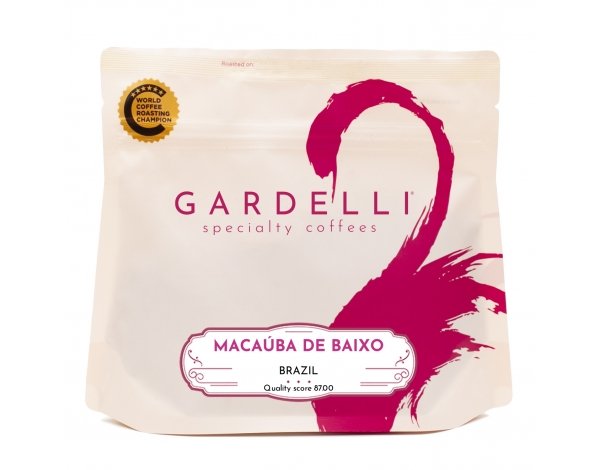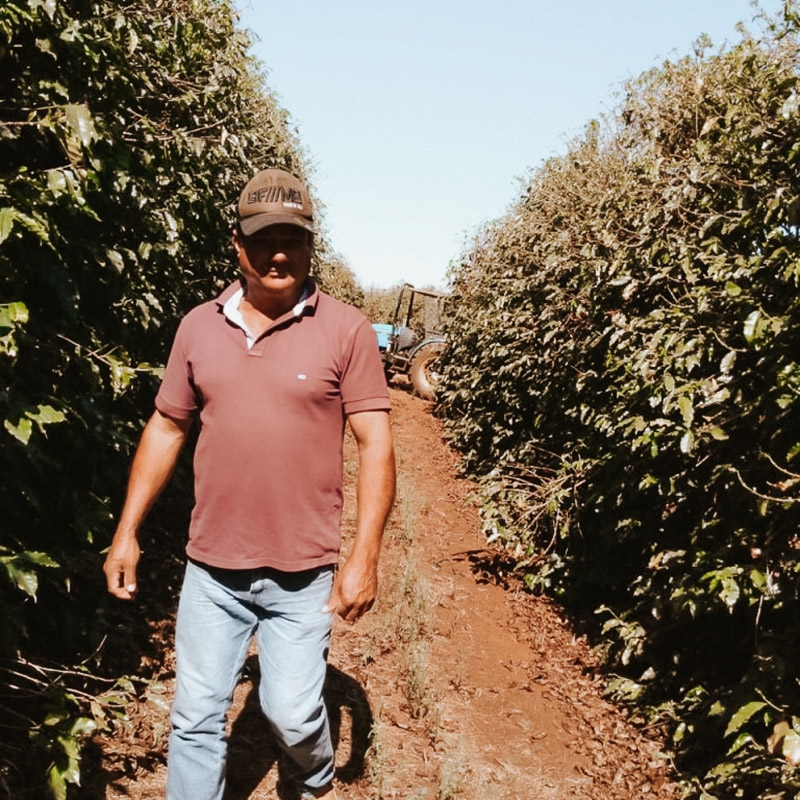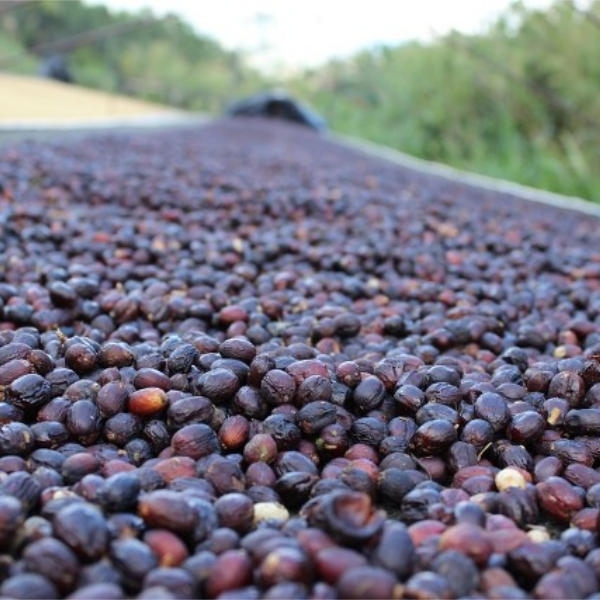





Brazil
250g
QUALITY SCORE: 87.00
Cup Notes
Chocolate / Cherry / Marzipan
Suggested for espresso and filter
when we roast
We freshly roast to order all coffees on Monday, Wednesday and Friday (excluding national holidays), and ship the same day! Cut-off time is 11:59pm (UTC+1) of the day before the roast day. *We only ship whole beans*
The Cerrado Mineiro region, located in the northwest of Minas Gerais State is a world-famous origin of high-quality coffee production. It became the first Protected Geographical Indication in Brazil in 2005, with full Designation of Origin in 2013. This region is characterised by its well-defined seasons a hot, wet summer followed by a pleasantly dry winter. The dry climate during harvest eliminates potential problems caused by humidity at the drying stage.
Dimas Alves de Almedia came to coffee production from dairy cattle ranching in 1985 when he inherited the farm from his parents, where he gradually began coffee production, first planting three hectares with Mundo Novo and Catuai varieties.
Given many difficulties and lack of equipment, he decided to work on improving quality and quantity by investing in cultural elements of production and implementing best agricultural practices. Today, Dimas production includes 12 hectares of coffee, which supports his family and fulfills his passion for cultivating coffee while achieving incredible flavour and quality. The farm yields an average of 420 bags annually.

Mundo Novo is a vigorous and productive plant with good cup quality, but susceptible to major diseases. It is a natural hybrid of Typica sub-varieties, Sumatra and Bourbon, grown widely in South America, but rarely in Central America and the Caribbean. Originally discovered in Brazil in the 1940s by the Instituto Agronômico de Campinase, the plant is strong, tall (3 m) and resistant to diseases and strong wind. Due to these features and its good cup quality, Mundo Novo is one of the most common amongst Brazilian coffee cultivators, forming around 40% of all grown coffee in the country.
Mundo Novo’s productivity is high (according to some estimates, 30% higher than that of Bourbon), but its cherries ripen somewhat later than other varieties. Its best growing heights are between 1,050 to 1,670 metres above sea level, with rainfall of 1,200 to 1,800mm per annum.
Catuai is a cross between highly productive Mundo Novo and compact Caturra, made by the Instituto Agronomico (IAC) of Sao Paulo State in Campinas, Brazil. The plant is highly productive compared to Bourbon, in part because of its small size, which allows plants to be closely spaced; it can be planted at nearly double the density. The plant’s shape makes it relatively easy to apply pest and disease treatments. It is mainly characterized by great vigor and its low height; it is less compact than Caturra. It is highly susceptible to coffee leaf rust.
Catuaí derives from the Guarani multo mom, meaning “very good." Today, it is considered to have good but not great cup quality. There are yellow-fruited and red-fruited types, and have since been many selections in different countries. The cultivar was created in 1949 from a crossing of yellow Caturra and Mundo Novo, and initially called H-2077.
The variety was released in Brazil 1972 after pedigree selection (selection of individual plants through successive generations) and is in wide cultivation there.
It was first introduced in Honduras in 1979, where it was tested by Instituto Hondureño del Café (IHCAFÉ). It was released commercially in 1983, after IHCAFÉ selected two lines for planting. In Honduras today, Catui accounts for nearly half of the Arabica coffee in cultivation. Researchers at IHCAFÉ are actively pursuing breeding with Catuai, including creating hybrid crosses between Catuai and Timor Hybrid lines.
It is also economically important in Costa Rica, where a yellow-fruiting Catuai was introduced in 1985, whose descendants have spread widely through the country. It was introduced into Guatemala in 1970; currently about 20% of the country’s production is Catuai. It has a negligible presence in other Central American countries.
Catuai, whose small stature allows it to be planted densely and harvested more efficiently, led in part to the intensification of full-sun coffee cultivation in Central America in the 1970s and 1980s.

Dry process seems simple: pick the fruit, lay it out in the sun until it turns from red to brown to near-black, and then hull off the thick, dried outer layer in one step to reveal the green bean. It is a method suited to arid regions, where the sun and heat can dry the seed inside the intact fruit skin.
It's often referred to as "natural coffee" because of its simplicity, and because the fruit remains intact and undisturbed, a bit like drying grapes into raisins. Since it requires minimal investment, the dry process method is a default to create cheap commodity-grade coffee in areas that have the right climate capable of drying the fruit and seed.
But it’s a fail in humid or wet regions. If the drying isn't progressing fast enough, the fruit degrades, rots or gets covered with mould.
Dry-processed coffees can also be wildly inconsistent. If you want a cleanly-fruited, sweet, intense cup, dry process (DP) takes more hand labor than wet process. Even the most careful pickers will take green unripe or semi-ripe coffee off the branch as they pick red, ripe cherry. If these are not removed in the first days of drying, the green turns to brown that is hard to distinguish from the ripe fruit.
